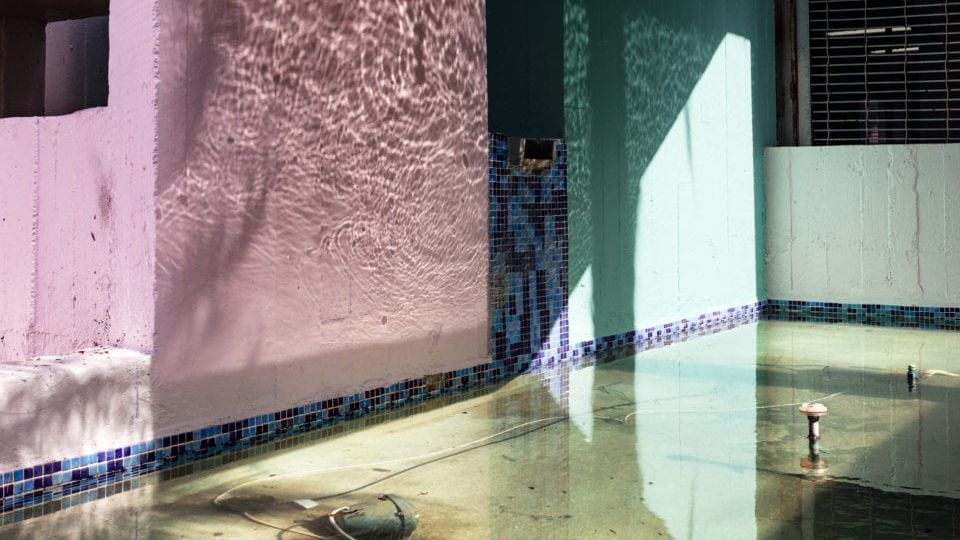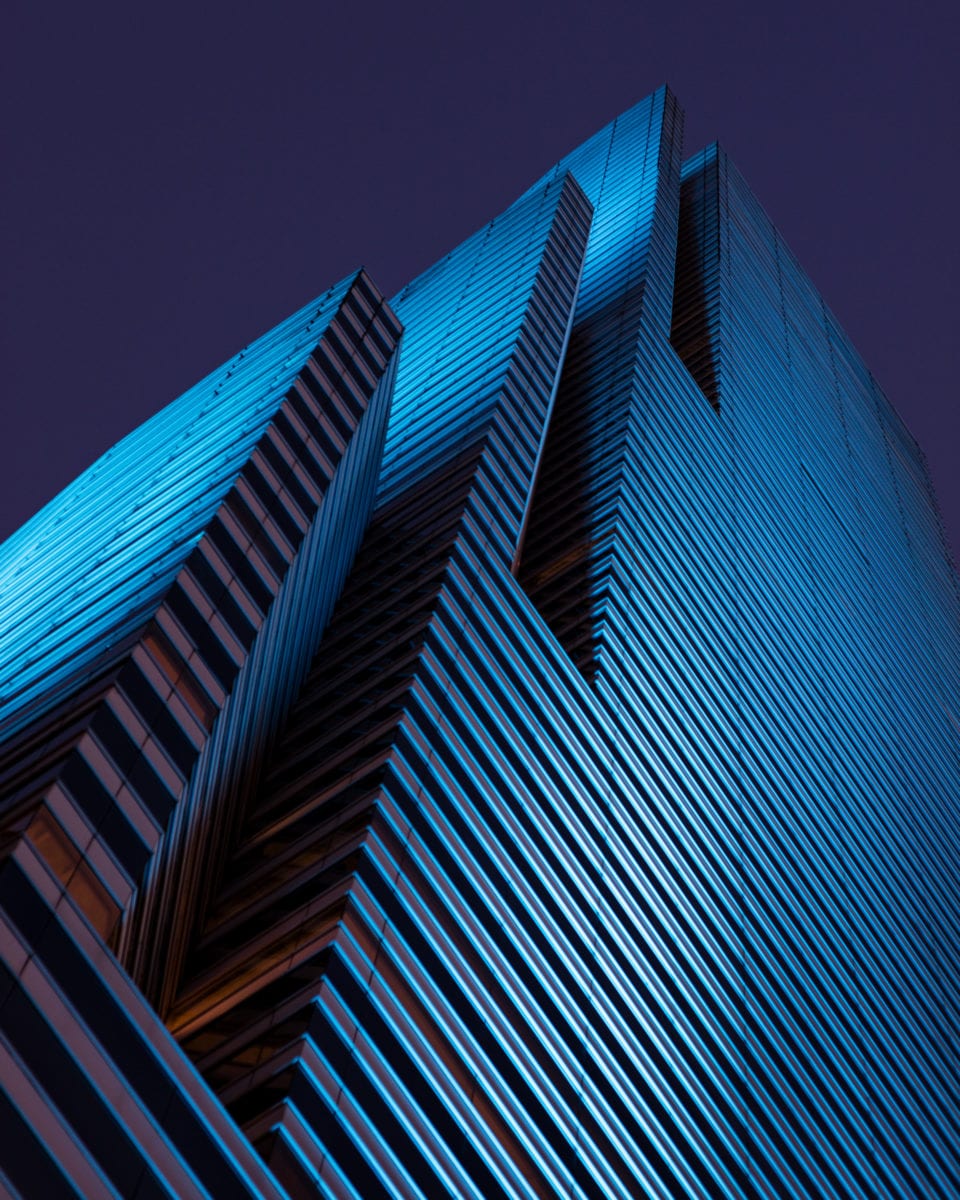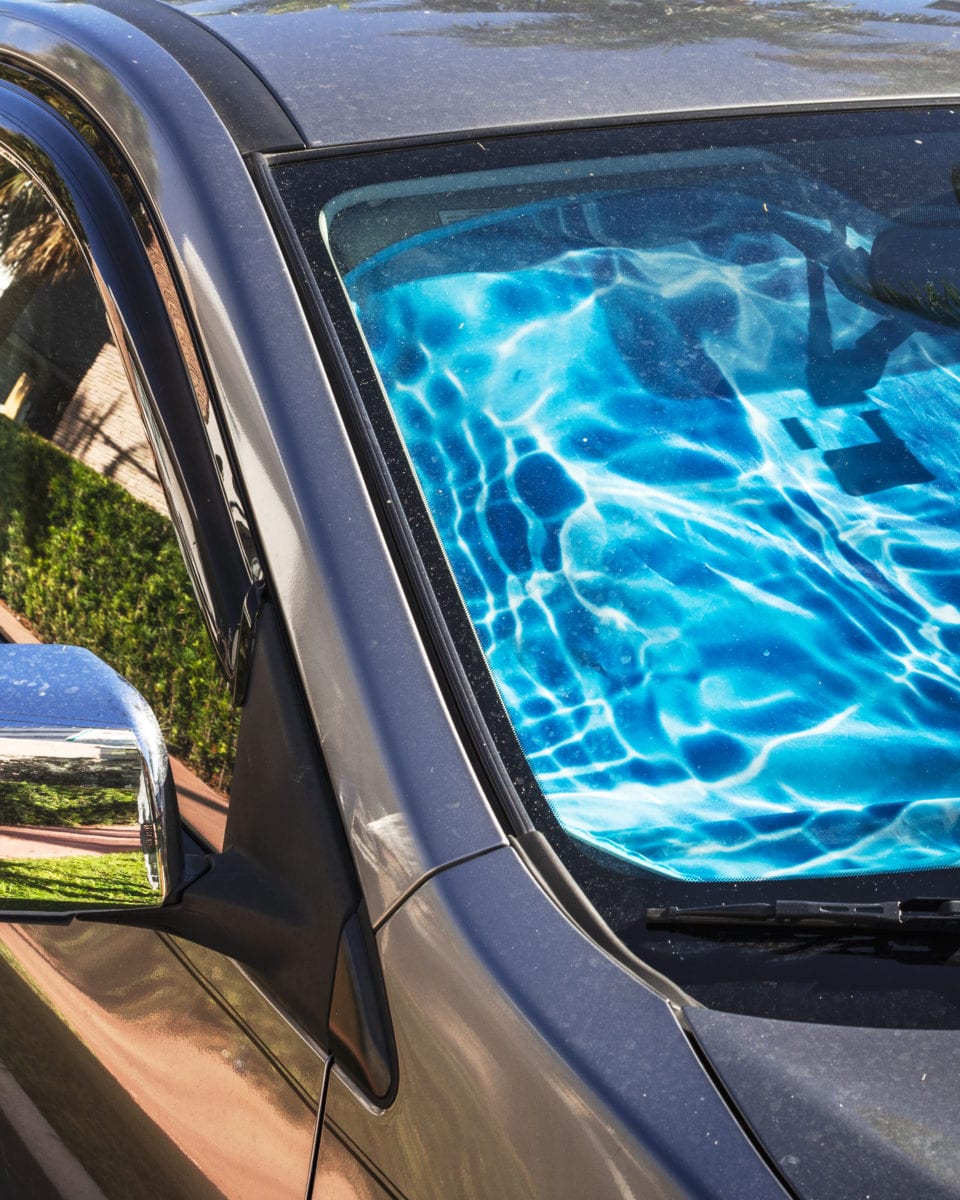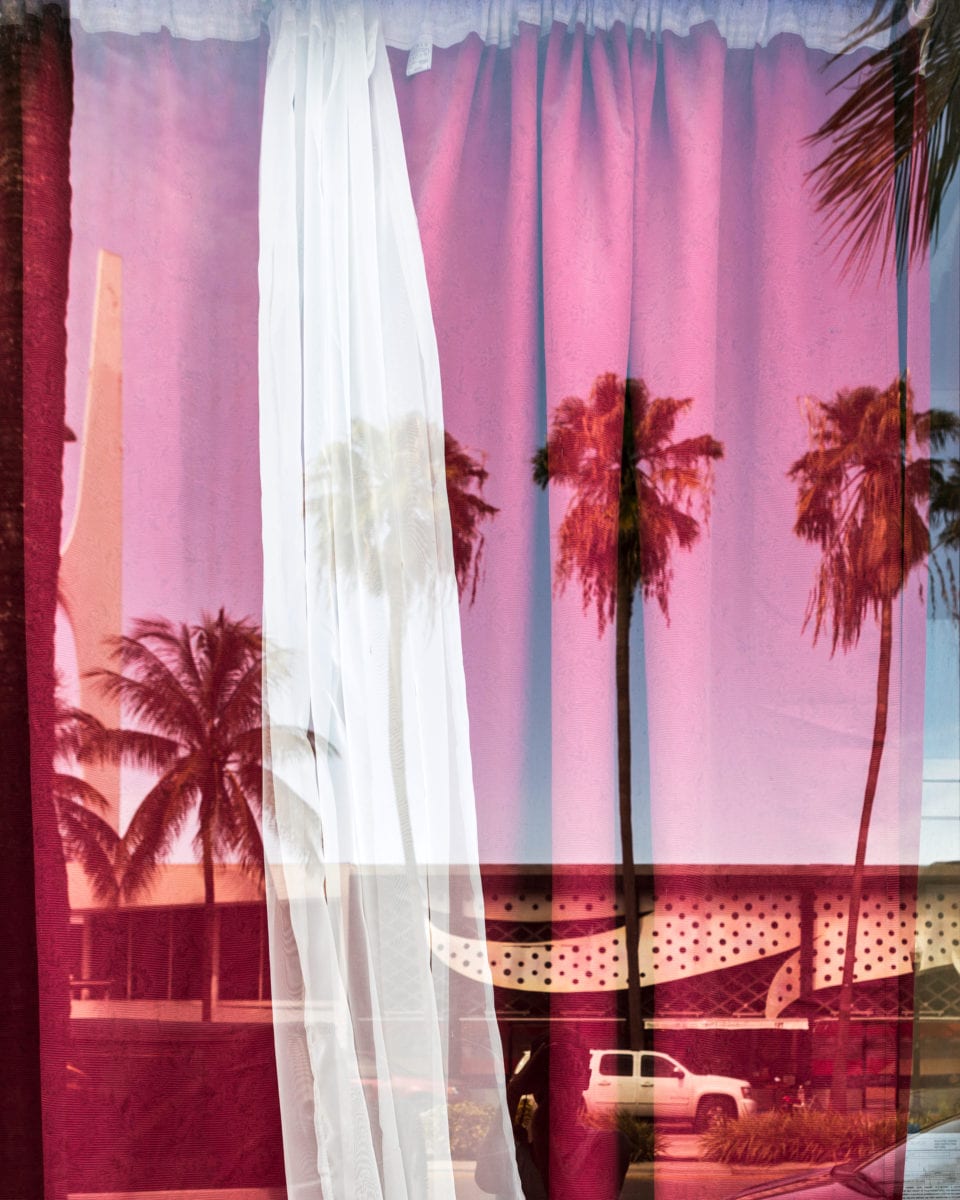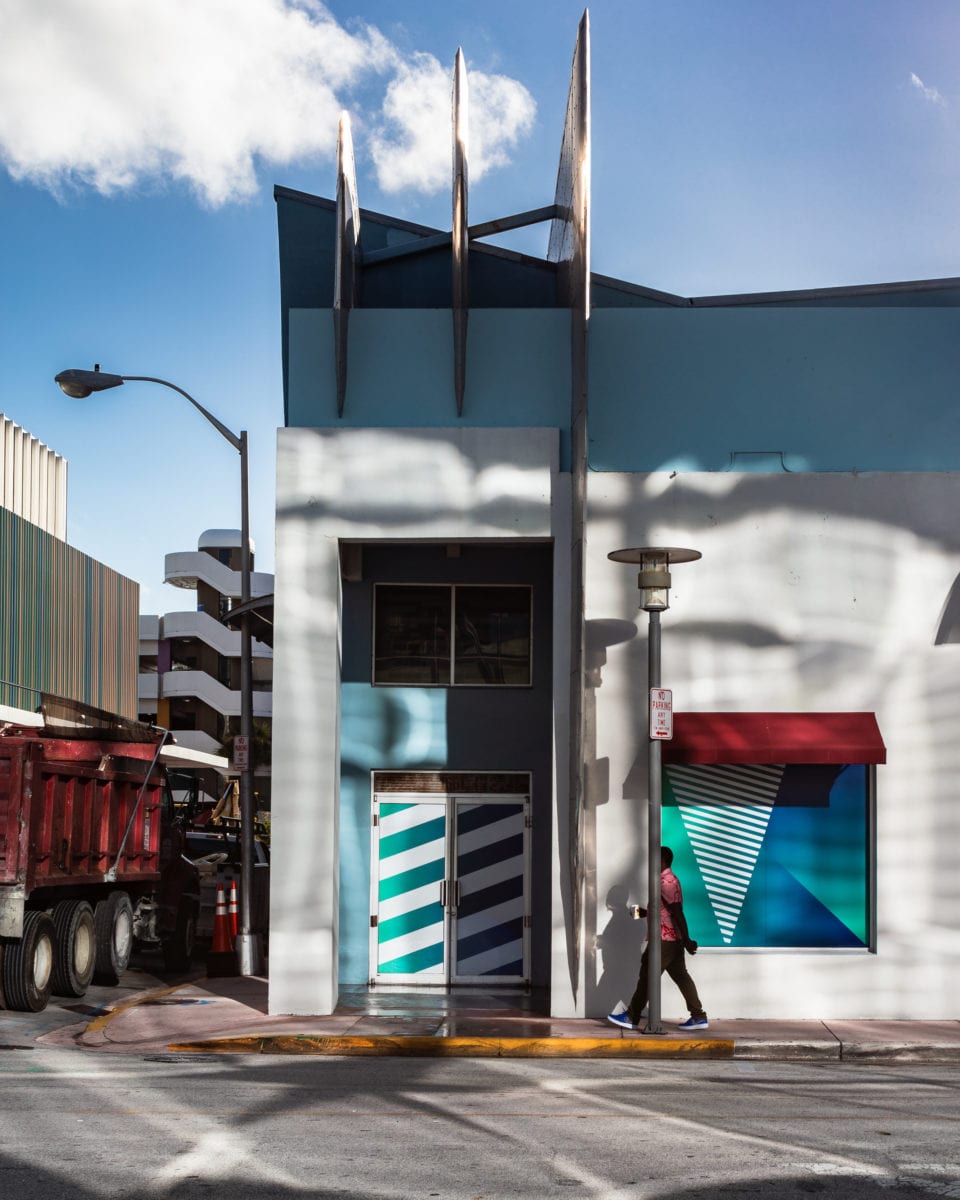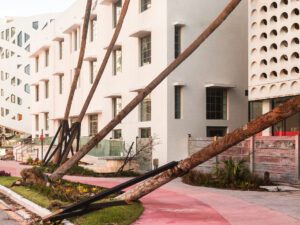Miami-based Anastasia Samoylova’s FloodZone is a series reflecting and responding to the problem of rising sea levels. The book, published by Steidl, is an account of life on the climatic knife-edge of the southern United States. The photographer discusses the project with Aesthetica, revealing how it subverts the visual language of paradise to reflect today’s environmental anxieties.
A: Where are the locations captured in FloodZone?
AS: Most of the photographs for the project were taken in Florida and the neighbouring states. These are the coastal areas that are most threatened by the rise in sea level. However, I am less interested in depictions of the ocean itself then I am in water more generally. These are areas in which the boundaries between land and sea are very fragile, where saltwater and freshwater mix. Everything is in flux.
A: What prompted you to create this series?
AS: I moved to Miami Beach three years ago. It was immediately apparent that there was a profound disconnection between the public image that the place presents and the reality. This is an economy built on tourism and the real estate boom, so the place presents a relentlessly positive and glamorous image of itself. However, it is slowly sinking. Sea levels are rising, hurricanes are more powerful and frequent, and within a few generations it is likely that much of the area will be abandoned, and certainly transformed.
A: How would you describe your approach to image-making? It seems to move beyond traditional documentary photography.
AS: I’m interested in the psychological effects of living everyday life knowing that these profound changes are coming. So rather than the usual images of disaster or catastrophe, I am using my camera to pay attention to everyday signs and symbols of larger changes and anxieties. This is a very troubled paradise and a lot of my imagery reflects this. I try to use familiar motifs of the leisurely tropics, but I present them as images not of promise or luxury, but of fragility and uncertainty.
A: What details do you look for in these landscapes?
AS: Often very small things attract my attention – where the photogenic meets a feeling of slight disturbance. Photography can allow you to get at very big issues through humble and delicate observations. I am interested in the possibility of a new kind of iconography of climate change, one that does not come from drama but from the ongoing sense of dread that is now so pervasive, especially in these coastal areas.
A: The palm trees, pools, and seascapes have an unsettling undertone. How do these images subvert the visual language of paradise to raise very real questions about natural disaster and climate change?
AS: I think these motifs subvert themselves, because the kinds of locations we think of as embodying paradise are always delicate and ephemeral. The pool may resemble an impressionist painting, but those are mangrove leaves torn up by a hurricane that float in it serenely. There is also something fragile about photography as a medium. Yes, it fixes things and makes them permanent, but in doing so it also speaks of time passing and the inevitability of change. It is clear that major and inevitable change is coming.
A: What do you hope viewers take away from the book?
AS: I would like to think that for contemporary audiences, FloodZone might offer a more reflective and expansive way of thinking about climate change and what we expect from images. My feeling is that photographs always pose more questions than they answer. That’s what they do best. Photographs are poems and provocations, suggestive and open-ended. We tend to think of climate change as being a subject demanding images that communicate clear and simple messages. There’s a place for this, of course, but I think it is just as important to keep open an imaginative space, even in the heart of the crisis. It’s clear we are all going to have to be imaginative and creative if we are going to understand, live with and counter the effects of climate change. Moreover, we are at a point where it is becoming difficult to foresee exactly what the life for the next few generations will be. Somewhere deep down, I think I have also been making FloodZone for the unknown future, trying to find a visual sensibility that gets to the conflicted feelings that are characteristic of our present moment. This is something worth capturing, for whatever audience is to come.
Find out more about the project here. Anastasia Samoylova’s work is at Galerie Peter Sillem from 27 June – 22 August.
IG: @anasamoylova
Images from FloodZone, courtesy Anastasia Samoylova.


